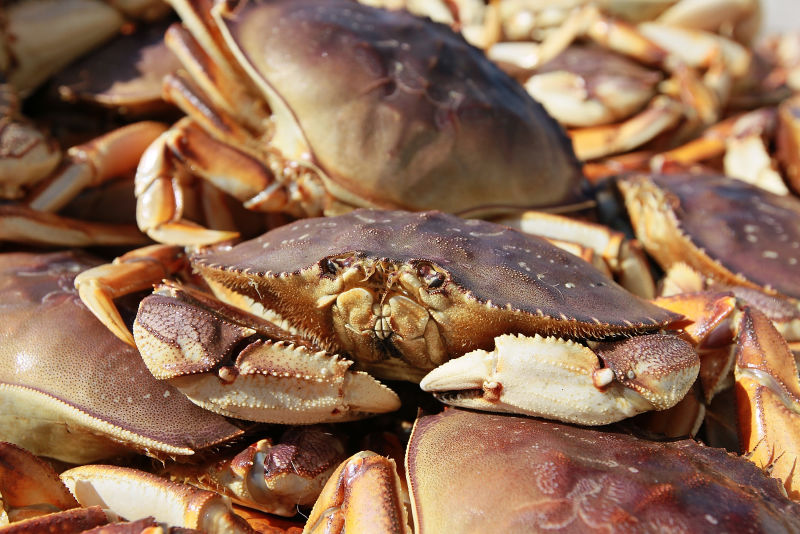California health officials have given the all-clear for consumption of Dungeness crab caught in waters off the Bay Area.
Thursday's announcement from the state Department of Public Health said levels of a dangerous marine toxin have declined to "low or undetectable levels" in crabs caught from Monterey up to Marin.
The Department of Fish and Wildlife said the finding will allow the immediate opening of the recreational Dungeness crab fishery along the coast south of 38 degrees north latitude -- roughly the southern edge of Point Reyes.
The agency said the commercial fishing fleet, which has been sidelined for months because of high levels of domoic acid in crabs offshore, could be allowed to harvest Dungeness as early as next week. Dungeness crabs will remain off-limits in California waters north of the 38th parallel.
The Department of Public Health and its Office of Environmental Health Hazard Assessment are still recommending that consumers exercise an extra level of caution when eating fresh-caught California Dungeness:
Despite several weeks of samples below alert levels, as a precaution, CDPH and OEHHA recommend that anglers and consumers not eat the viscera (internal organs, also known as “butter” or “guts”) of crabs. CDPH and OEHHA are also recommending that water or broth used to cook whole crabs be discarded and not used to prepare dishes such as sauces, broths, soups or stews. The viscera usually contain much higher levels of domoic acid than crab body meat. When whole crabs are cooked in liquid, domoic acid may leach from the viscera into the cooking liquid. This precaution is being recommended to avoid harm in the unlikely event that some crabs taken from an open fishery have elevated levels of domoic acid.
Domoic acid is a potentially fatal toxin produced by a microscopic species of algae that may have flourished in the eastern Pacific in 2015 because of unusually warm water temperatures. The substance is believed to have caused widespread poisoning of seals and other marine mammals last year.
